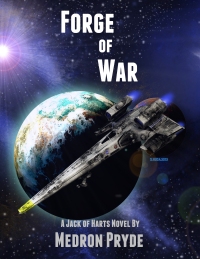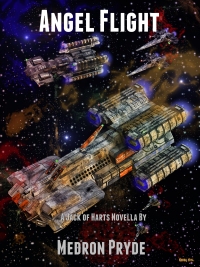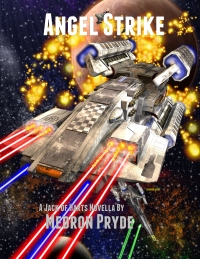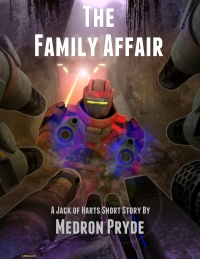Book of Civilizations – Europe
Hello, my name is Charles. The rise of Europe changed the destiny of our world forever. Europe formed Western Civilization as we know it, it colonized the world, and it controlled the world for centuries. It is natural that Europe considers itself the center of the universe. It is interesting then that in the modern day, two great alliances come from Europe. The Western Alliance and the Russian Federation are strong indeed, but they are not alone.
Book of Civilizations
Europe
According to historians, recorded history began a few thousand years ago when scattered tribes began to write symbols on stones. One thing I have learned while studying our histories is that our civilizations are far older than that. Historians tell us that cultures come and go, wiped out by new ones like a giant Darwinian experiment where only the fittest survive. But cultures evolve. A culture does not die when it stops drinking from ceramic cups and begins drinking from glass. It just evolved.
I have learned that we achieve a much more complete understanding of our history if we look at the cities. We all know the story of Rome, founded by Romulus and Remus in 753 BC, to become the capital of the greatest empire in history. The old saying was that all roads went to Rome because there was nowhere else to go. It is a great story. It ignores the fact that people have lived there since the Ice Age, over 12,000 years ago.
Constantinople, the other great city of the Roman Empire, has been continuously inhabited since 660 BC, despite having been through four major cultural changes. It was named Byzantium under the Greeks, Constantinople under the Romans, Istanbul under the Muslims, and now Constantinople again. It has been the same city for over 2,000 years, and is in fact The City according those who live there. People have lived in that same location since at least 6,000 years before the Greeks “founded” it.
Mediterranean Europe is full of ancient cities like that, places where we built the cities we live in now over cities where we weathered the Ice Age, places that were far enough away from the ocean coasts that humanity survived when the glaciers that covered northern Europe and America melted. And just like on every other continent, we have found pyramids older than Western Civilization itself. How long have these cities and monuments been here? How long have our civilizations lived? Not the hunter-gatherer roaming people historians say we were. How long ago did we build the original cities that we live on top of now? We don’t know.
What we do know is that the Ice Age glaciers melted, and the people of Mediterranean Europe moved north, expanding into the newly uncovered lands. Those who moved into the harsher environments of the north had to grow stronger or die. They became the Germanic people who moved into the Germanies, the British Isles, Scandinavia, the Balkans, and even into western Russia. The settlements and towns we established all of those thousands of years ago, behind the retreating glaciers, became the basis for the modern societies that we know today.
While the ancient Greeks conquered the known world, the Germanic people became Celtic, Scandinavian, and Russian. Then Rome rose to control the entire Mediterranean World. And with the help of Germanic troops willing to work for Rome, it captured much of Northern Europe and even the British Isles. Christianity came out of Israel and used the vast Roman roads to spread the faith to all corners of the known world. Rome would fall of course, when Roman corruption grew too great, and centuries of darkness fell on European civilization. Muslims rose in the east and after a long series of wars between Christian and Muslim even The City of Constantinople fell to them.
But in the end, Europe rose out of the darkness with a Renaissance of thinking that propelled it into being the most powerful collection of realms on the planet. Spain, Portugal, England, France, the Netherlands, Denmark, Belgium, and Germany carved out colonies throughout the non-European world. At the same time, the Austro-Hungarian Empire became one of the great empires of Eastern Europe, alongside the Ottoman Empire that held almost all of the non-European Roman Empire. And the Russian Empire became the third largest empire in the history of the world, stretching from Eastern Europe to Alaska. Only the British and Mongol empires surpassed Russia’s territorial control, and only the British and Chinese had more people.
A tangle of alliances linked the various European powers into a crazy quilt of relations that few could even understand. In 1914, the assassination of Archduke Franz Ferdinand of Austria sent these alliances tumbling headlong into “The War To End All Wars.” What we call World War I pitted the great empires of the day in a mortal struggle for survival that burned the lands of Europe and beyond.
The Austro-Hungarian Empire collapsed and the Russian Empire fell to the October Revolution of Stalin, both long before the war ended. In peace settlements after the war, the victorious Allied Powers split the Ottoman and German Imperial holdings between them and levied crippling war reparations on the German government. The German economy could not afford to both pay the reparations and rebuild, and it collapsed when the world economy slipped into a Depression.
Hitler’s National Socialist Party rose to power with a Germany First mantra and the Global War soon followed when Germany, Italy, Japan, and Russia began to rebuild their empires. The Allied Powers reformed to fight the Axis Powers, with America and Russia joining England after Japan attacked America and Germany betrayed Russia. It was a long war, resulting in millions of deaths, and sinking a third of the planet’s ships. World War II ended with the total destruction of Germany and defeat of Japan.
In order to stop a Third World War from happening, The Allied Nations formed the United Nations with the goal of promoting the peace by only accepting peaceful nations into its fold. The Europeans stepped back from their colonial possessions throughout the world, granting them self-rule again, and the UN began accepting the rash of new nations, whether or not they were actually peaceful, in an attempt to become a global government. Meanwhile, Europe and the world became embroiled in the Cold War between America and the Soviet Union, with a Soviet Iron Curtain separating Eastern Europe, and East Germany, from the rest of the world. The Republic of China and many other nations fell to communist revolutions and the massive Soviet Block became a true threat to the rest of the world.
By the end of the century though, the Soviet Union collapsed due to a shattered economy that could no longer support the socialist system, the Iron Curtain fell, and the new Russian Federation and numerous former Soviet satellite states began attempting to rebuild. Germany reformed, the nations of Eastern Europe joined the Western alliances, and it appeared as though the world was headed into a new age century of peace and prosperity.
Then the Islamic Jihad reared its head and the World Trade Center towers in New York fell. Europe went to war in support of America, sending their troops back into the Arab World in attempt to bring order to it. Despite their best efforts, the Muslims never truly accepted the help of those they had been at war with for over a thousand years. And with sizable Muslim minorities in many of the European nations, Muslim riots in the streets began to threaten the central authority of many nations.
When the American financial system collapsed, it was a death knell to the rest of the world economy. Overnight, the banks froze their accounts and went on a bank holiday, protecting their own interests. Protests and riots swept through Europe, destabilizing governments, and those already at the tipping point collapsed into anarchy.
France, Spain, Greece, and the Balkans saw large parts of their territories effectively seceding from the central governments. Most of the other nations saw similar actions, though they were far more localized into isolated neighborhoods in larger cities rather than large swaths of the countryside. The territories controlled by the Islamic Brotherhoods became regarded as some of the worst in the world, with Sharia Law enforced on all residents under their control, whether Muslim or not. Rapes and murders skyrocketed, a trait which the Anarchist and People’s Revolution-controlled territories often shared.
The economic underpinning of the European Union collapsed, and the few stable nations like England, Germany, Italy, and the Scandinavian realms could not afford to bail out the floundering ones after the numerous bailouts they’d given earlier in the century. Instead they shored up the remains of their financial systems, and Germany actually nationalized its central banks in a move that terrified bankers across the world. As other countries looked ready to follow Germany’s example, the banks became far more cooperative in lending their money out again. They even guaranteed loans to some of the European nations, giving them enough money to keep the militaries and police forces paid and equipped.
The war in the streets against the Muslims, Anarchists, and Communists lasted for years, with suicide bombs, improvised explosives, and guerilla attacks becoming the standard tactic of the revolutionary movements. Greece, Spain, and Italy, near major Muslim nations in Africa and the Middle East, soon became the targets of full-scale invasions that threatened to completely destabilize them. They and other European governments from Portugal to the Russian’s long border with the Islamic states wiped out hundreds of resistance cells. But there were always new bodies to replace the dead ones, and many of the former Soviet republics failed altogether. The Russians were happy to help their neighbors in need of course, sending in military forces to help stabilize them.
And in 2061 England received a wakeup call that they had an additional enemy. China had been gobbling up countries since the Second Great Depression started, and they had their sights on Australia next. England called for aid from NATO and Canada and America answered. Linking up with the Australian Defence Force, the four nations worked together to engage the Chinese invasion force short of the Australia coast. They intercepted the Chinese just outside Indonesian waters, and the combined fleets engaged each other in a long game of bluff and counterbluff. Over a period of months, Chinese fleets moved on New Guinea, the Mariana Islands, and dozens of other targets throughout the Pacific Ocean, resulting in several skirmishes between small task forces.
With the United Nations paralyzed by Russian and Chinese vetoes, and NATO membership plunging due to Russian and Islamic Brotherhood pressure, the four nations began negotiations for creating a new military alliance. Largely based on NATO, and generally considered to be its successor by modern historians, the new Western Alliance held the line against Chinese expansion deeper into the Pacific, but proved unable to roll back their previous conquests. The Indonesia-New Guinea-Micronesia Front became one of the tensest borders in the world in a matter of months.
The successful stand of the Western Alliance against the Chinese caught the attention of the other European nations though, and Poland quickly asked for membership. Other nations echoed their actions, and soon most of Europe west of Poland and Greece had joined. Western Alliance troops soon began striking back against the most organized enemies, the armies of Turkey and North Africa. The fighting did much to destroy the armed forces of the European enemies, and Western Alliance ground forces soon rolled all of the Muslim forces out of the European territories. Finally, in a major coup, even Constantinople, the Great City of the East, rebelled against Islamic Brotherhood rule and petitioned for inclusion in the Western Alliance as the world’s largest sovereign city-state.
In the East, Russia effectively took over every European nation north of Bulgaria, and stormed south into the Greater Middle East. They secured almost the entire coasts of the Black and Caspian Seas, stopped only by Constantinople and a rising Persian Republic that had finally finished a bloody rebellion against its own Islamic Brotherhood. By the time Russian expansion came to an end, they even shared a short border with India next to their longest border with China.
As the Twenty-First Century came to an end, and both the Western Alliance and Russian Federations stabilized, they began to rebuild their economies and perform true space exploration again. They colonized the Moon and Mars, and placed smaller outposts throughout the Solar System. It was a new space race, and even if both alliances lagged behind China they kept close to their mutual rival. A new Iron Curtain had fallen between the Western Alliance and the Russian Federation though, with only Constantinople keeping an open relationship with them for shipping and trading purposes.
When China performed the first hyperspace jump in 2105, it caused a small revolution in scientific and political thought throughout Europe. Everyone knew the space race had entered a new stage and would never be the same again. They all needed to be able to ship large containers into space. They needed permanent Orbital Elevators. There were no suitable places anywhere in Europe to build them, so the Western Alliance built the Orbital Elevators at Port Harcourt in Nigeria and Panama City, enabling them to send freight into space.
Russia had lost Cuba to a revolution though so they no longer possessed any territory near the equator. With this limitation, they did what the Russians have always done well. They adapted. They offered to help Sri Lanka build a permanent Orbital Elevator at Colombo in exchange for full access. Sri Lanka agreed. This greatly helped the Russian space program, but having to send shipments through Constantinople and the Suez left their security deficient. Because of these long shipment times through at best chilly waters in a diplomatic sense, the Russian space program would always lag until after Contact.
During the Twenty-Second Century, the Western Alliance founded a dozen colonies, as well as another eight started by single nations like England and Germany, or the Scandinavian Alliance. The Russian Federation in the meantime colonized a mere ten worlds. There were of course many disagreements in numerous systems and worlds over who owned what, and some of those disagreements escalated to the point of targeting weapons. A few even resulted in actual weapons fire.
But space is a very large place to go, and humanity discovered well over a hundred worlds inside The Walls of the Terran Bubble that could support life with ease. Hundreds more could support small outposts, and expensive terraforming could theoretically bring more into the Goldilocks fold. Even limited as we were, unable to pass through The Walls, it would have been centuries before we ran out of worlds to colonize in the mere three hundred lightyears we had to work with. Space as they say, is very large.
In 2205 though, all the worlds we lived on changed when the Peloran made Contact with a British destroyer squadron in the Terran system itself. They brought medical treatments that wiped out most of our diseases and shared technologies that were far beyond what we had access to. And they gave us hyperspace drives that could pierce the Walls and we began to explore the worlds outside the Terran Bubble. They gave most of those technologies only to the nations of the Western Alliance of course, but that didn’t matter. The Shang and Roderan arrived not long after the Peloran, providing the Chinese and Russians with very similar technologies. And the nonaligned nations like Persia and India gained most of the technologies they wanted by the simple expedient of trade.
In a matter of years, Earth’s cultures realized they would have to adjust to the idea of people living for centuries without dying of old age. And then we noticed the phenomenon of the Ageless, those who stopped aging at all when they received the final Peloran treatments. At first they appeared in the Celtic populations of Great Britain and America, but then we began to see some of them in other regions as well. At the same time, Earth’s technological base advanced by centuries, and Europe became a major center of the reindustrialization that would push us into the galaxy, rather than our mere collection of local stars. Using Roderan anti-gravity technology, the Russians built the Severnyi Polyus Orbital Elevator over the North Pole, bringing them in line with the other great nations.
And then a Roderan-upgraded Russian squadron confronted an old American fleet over a contested colony world on the far reaches of colonized space. The American fleet commander didn’t even know we had made Contact yet, and had no reason to believe that the six Russian destroyers would be any threat at all to his entire fleet. When he declined to leave the colony, a single Russian ship fired, lancing an American destroyer with gravity cannons that ripped the engines out of the ship. The Americans returned fire, but the gravitic-powered Russian ships performed maneuvers that no old reaction drive vessel could hope to match, and not a single one of the American ship killer missiles could track them. Only the American lasers found their targets, but gravitic deflector arrays twisted them away without so much as a scratch. With no chance of winning, the American surrendered the colony, and the Russians allowed him to grapple the crippled destroyer before they left.
That was the beginning of the new Great Space Race, far more aggressive than any other. Anti-gravity drives became easy to build, and the Europeans spread to the stars in an unorganized rush that no government could control. Where different nationalities claimed single worlds, they called in their alliances for aid, and the fleets came far more quickly than ever before. The European governments, whether West or Russian, didn’t want war, but the colonists were often far surer of defending what was “theirs” by right. Sometimes weapons fire broke out in orbit, but more often than not either fighting went on planetside between the colonists, or one of the nations arranged for an evacuation to another world within a few weeks travel at most.
The Chinese became less reasonable to European eyes as the decades went by. They wanted what was theirs, and what was theirs was anything that someone else did not defend properly. Especially if it was near another of their colonies. They held to the Lunar Treaty and the similar treaties that kept the other Core Worlds safe from attack, but in the Colony Regions it was the Wild Wild West all over again. The citizens of Europe heard very little about the troubles out there, because it was so far away, and most people didn’t care about the people who left, unless they were family.
Then the Shang attacked Yosemite Yards and Washington D.C. and everything changed. The governments stood with their American allies and the Shang hit Fort London, Fort Paris, Fort Berlin, and so many others. The Chinese began to raid their shipping, even in the Core Worlds, and then both the Chinese and the Shang hit Alpha Centauri. It was a wake up call to all of Europe and her worlds, in the Core and beyond. The War Europe had spent centuries avoiding had come for them and would not let them go. To their credit, the nations of Europe answered the call.
Russia on the other hand has so far stayed out of The War. They have no qualms with sitting back and watching as the West and the Far East fight. They hold to the Middle and wait to see what will happen next. Some people call to bring them in to The War. Some people do not. After all, they might choose the wrong side. Russia always looks after Russia after all.
In question is the future of Europe. Will it continue to command a position of power in the galaxy or will it fall under foreign influences like so many other civilizations have? Only time will tell.
 The Martian Affair on Amazon
The Martian Affair on Amazon Forge of War on Amazon
Forge of War on Amazon The Audacious Affair on Amazon
The Audacious Affair on Amazon Angel Flight on Amazon
Angel Flight on Amazon Angel Strike on Amazon
Angel Strike on Amazon Angel War on Amazon
Angel War on Amazon The Family Affair on Amazon
The Family Affair on Amazon The Thunderbird Affair on Amazon
The Thunderbird Affair on Amazon Wolfenheim Rising on Amazon
Wolfenheim Rising on Amazon Wolfenheim Emergent on Amazon
Wolfenheim Emergent on Amazon The Gemini Affair on Amazon
The Gemini Affair on Amazon
Discussion ¬